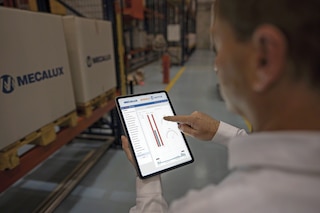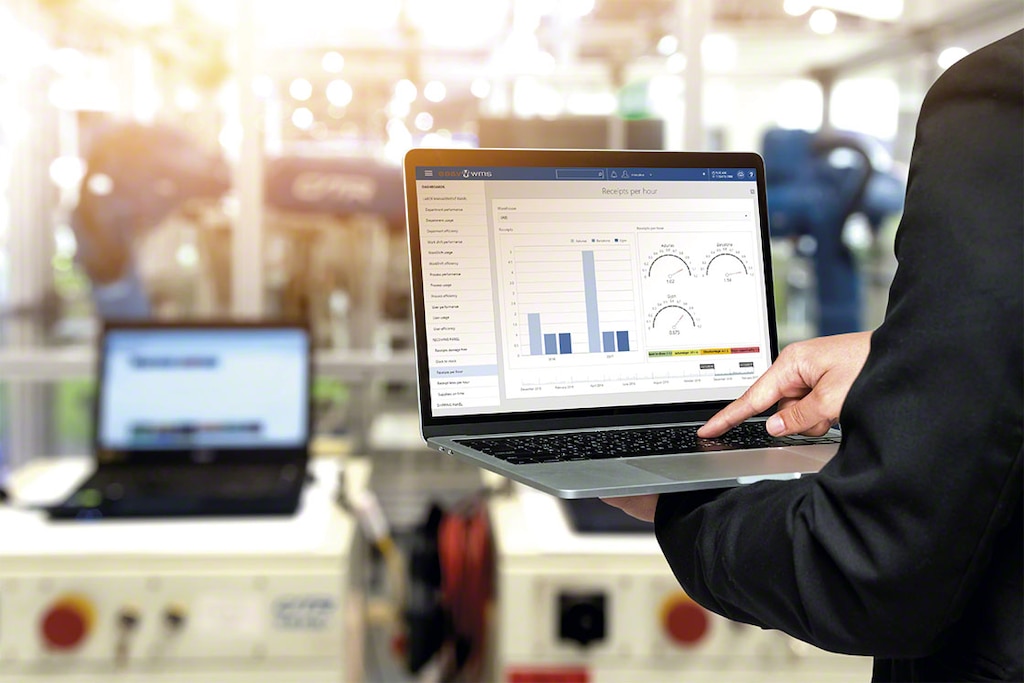
Smart supply chain: making logistics intelligent
The smart supply chain is the result of the incorporation of new technologies in the warehouse in response to the demand for flexible, integrated logistics systems adapted to product seasonality and customer needs.
In a competitive and complex environment — derived from structural changes such as the rise of new sales channels and low-cost returns — digitizing and automating logistics processes is the only way for companies to stay in the game.
Indeed, digital transformation constitutes a top ten objective for many organizations: 20% of supply chain leaders believe the digital supply chain is already the predominant model, and 80% expect it to become predominant within five years, according to a 2020 survey by MHI.
What’s smart supply chain?
Against the backdrop of Industry 4.0 and, particularly, the implementation of omnichannel retail and the same-day-delivery standard, companies have been forced to guarantee the best possible end-customer service at no additional cost.
So, what’s the solution? Smart supply chains rely on the IIoT (Industrial Internet of Things), advanced automation, and big data to process data and identify trends and opportunities that increase the efficiency of the logistics operations taking place inside and outside of the installation.
In an integrated supply chain, all stakeholders must monitor their performance in the logistics phases the product undergoes. This is due to the high quality demands not only from customers, but also from the various organizations involved in the chain.
That’s why many companies opt to install a warehouse management system — along with automated solutions for their storage and order prep processes — to boost productivity and do away with errors in their operations.
A study from consulting firm McKinsey finds that multinationals that integrate new technologies in their supply chains can save up to 30% on logistics expenses. The report takes as its sample North American companies with an annual turnover of approximately $10 billion.
In fact, it concludes that implementing smart supply chain technologies will make the chain more:
- Efficient: monitoring data and KPIs (key performance indicators) helps to predict mistakes and inefficiencies in workflows and goods movements, as well as future bottlenecks in the supply chain.
- Productive: new technologies enable businesses to innovate, using storage methods that maximize warehouse throughput.
- Flexible: big data makes it possible to pinpoint new logistics trends and adapt the operation of the installation to the most effective storage system, optimizing the company’s logistics costs. Data analysis facilitates strategic decision making based on warehouse performance, for example, alternating between FIFO (first in, first out) and LIFO (last in, first out) product insertion and removal methods or adopting automated or conventional storage solutions.
Digital transformation of the supply chain
The trend towards smart supply chains ultimately stems from the need for each company to monitor all the product design, manufacturing, processing, and storage processes to guarantee the traceability of that product and to comply with the required quality and hygiene standards.
But, what technologies are key in developing smart supply chains?
- Big data: real-time data analysis enables the continuous improvement of logistics processes. A WMS optimizes workflows and goods flows in addition to increasing the final throughput of logistics centers.
- IIoT: the Industrial Internet of Things establishes a nexus between the various devices used in the warehouse, translating into greater productivity in operations and significant logistics cost savings.
- Cloud storage: the amount of information collected by all the supply chain stakeholders calls for a high storage capacity. Therefore, the future of logistics lies in the cloud. In this vein, Interlake Mecalux’s Easy WMS warehouse management system can be implemented in the SaaS (software as a service) mode, whereby the servers are located off the customer’s premises.
- AI: artificial intelligence raises the efficiency and productivity of the different automated storage systems ― robots ― operating in the installation, allowing them to make smart decisions without operator intervention.
- Blockchain: this technology makes it possible for supply chain participants to exchange information in a securer, more agile way. Plus, it interconnects all the storage systems and robots deployed in the warehouse on a single, immutable network.

The technologies listed above are the torchbearers when it comes to the digital transformation of warehouses. However, it’s worth noting that others such as 5G, digital twins, and machine learning are also doing their part to optimize the supply chain, making it more effective and responsive to the demands of Industry 4.0 facilities.
Supply Chain Analytics: efficiency and productivity for the supply chain
New technologies provide logistics managers (and, generally speaking, all supply chain players) with information on the processes taking place in the warehouse.
But how can you properly analyze it to ramp up your installation’s efficiency? Warehouse digitization entails the implementation of a warehouse management system that measures the throughput of the operators and processes in the logistics center to eliminate cost overruns within the company.
The most cutting-edge WMSs incorporate additional modules to examine warehouse KPIs in order to make logistics decisions that boost productivity and cut costs. For example, Easy WMS, the warehouse management system from Interlake Mecalux, has an advanced feature for interpreting the data produced by the various supply chain stakeholders: Supply Chain Analytics.
This software enables you to:
- Make all the business’s information visible in a comprehensive way.
- Adopt strategic measures based on the analysis of real statistics.
- Interpret and recognize market trends before they happen.
Digitization: a continuous improvement method
In the end, smart supply chains combine companies’ adoption of technology with the integration of information generated in each logistics stage. The end goal, thus, is to improve efficiency, guaranteeing that products are delivered to end customers under the previously agreed upon conditions.
This digital overhaul, with warehouse automation and digitization as its cornerstones, facilitates the continuous improvement of organizations through data analysis and the incorporation of automation in logistics installations. At the end of the day, the aim is to make decisions with as much information as possible to eliminate mistakes and inefficiencies.
At Interlake Mecalux, we have top-notch expertise in implementing storage solutions. To learn more about how to integrate your company into the smart supply chain, don’t hesitate to get in touch. One of our expert consultants will analyze your warehouse operations and propose improvements for your facility and processes.
